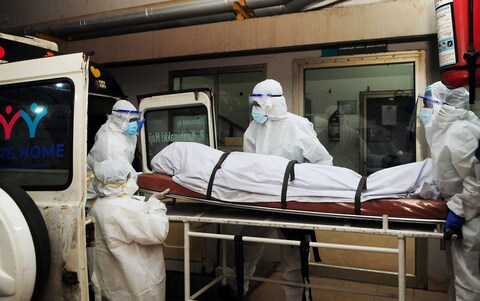Infection
India races to contain outbreak of deadly Nipah virus
Schools and offices have been shut and more than 800 people tracked down as India races to contain an outbreak of Nipah, a virus with “serious epidemic potential” and a fatality rate as high as 75 per cent.
Authorities in the southern state of Kerala are attempting to curb the pathogen’s spread after two people died from the virus – which inspired the film Contagion, a pandemic thriller.
It’s the fourth time Nipah has hit the state. In 2018, 21 of the 23 people infected with Nipah in Kerala died, while subsequent outbreaks in 2019 and 2021 killed two people.
Now, authorities racing to curb the renewed threat have declared containment zones in at least eight villages, where public offices, schools, government buildings and religious institutions have been temporarily closed.
Public transport has also been suspended, while more than 800 potential contacts – including 153 health workers – have been identified and tested. So far, at least three people, including the nine-year-old child of one of the victims, have been hospitalised after testing positive.
Health workers wear protective suits to move the body of a person who died of a Nipah virus at a private hospital in Kozikode, Kerala
Credit: AFP via Getty Images
“We are in a stage of hypervigilance and detection,” Veena George, the state’s health minister, told Reuters, adding that 77 people have been identified as being at especially high risk.
“We are testing human beings … and at the same time experts are collecting fluid samples from forested areas that could be the hotspot for the spread,” she said.
The pathogen spreads through contact with the bodily fluids of infected animals or people. During the first known epidemic in Malaysia and Singapore in 1999, the virus jumped from pigs to farmers and killed 105 people, but more recently in Bangladesh and India it has been traced to bats in sporadic, smaller outbreaks.
Despite being deemed by the World Health Organization as a priority pathogen with “serious potential” to drive mass outbreaks, there are still no vaccines or drugs to specifically target the virus.
“It’s one the deadliest pathogens known to infect humans,” Dr Gabrielle Breugelmans, director of epidemiology at the Coalition for Epidemic Preparedness Innovations (Cepi), told the Telegraph earlier this year.
“[The] reason it’s so scary … is that it’s very pathogenic across a broad range of mammals, including humans, and so it has what we call high pandemic potential, because there’s a high likelihood of a spillover … from animals to humans,” she added.
Symptoms of the respiratory disease vary – it often starts with a fever, headache or myalgia before developing into dizziness or confusion, which signals brain inflammation. In severe cases, people can become comatose within 24 hours.
Of those who survive Nipah, roughly 20 per cent are left with long-term neurological conditions, including personality changes or seizure disorders.
Protect yourself and your family by learning more about Global Health Security

